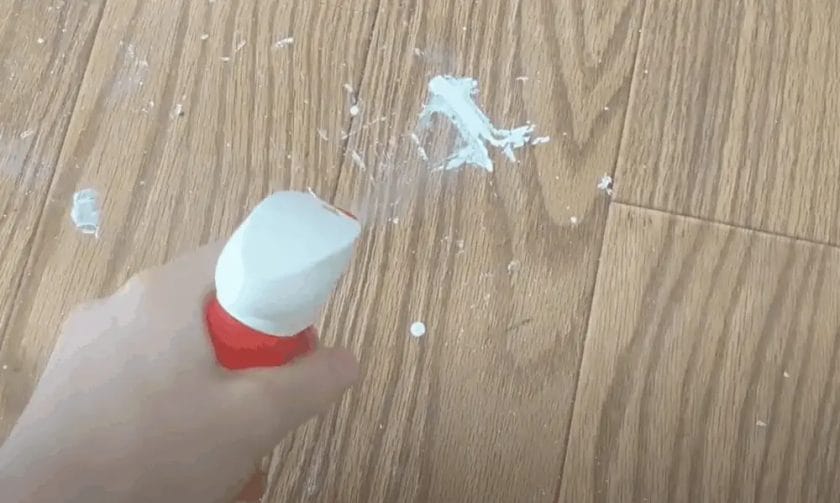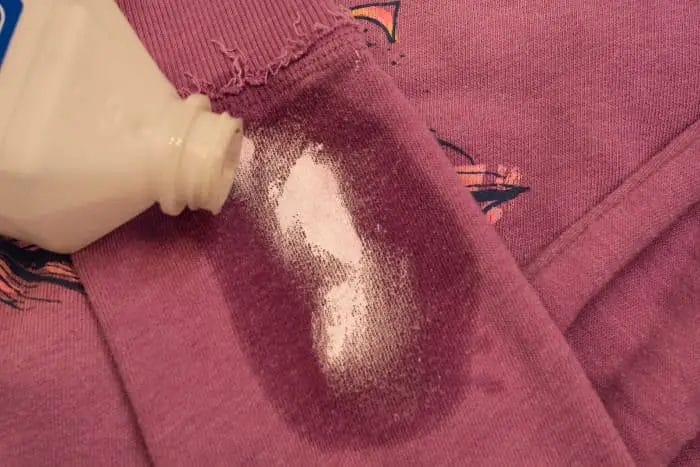Are you struggling to remove dried paint from your acrylic bathtub? Don’t worry, we’ve got you covered! Removing dried paint from an acrylic bathtub can be a daunting task, but with the right techniques, it can be done effectively. Here are a few methods that can help you get rid of that stubborn paint and restore the shine of your bathtub.
One of the easiest ways to remove dried paint from an acrylic bathtub is by using rubbing alcohol. Simply dampen a cloth or sponge with rubbing alcohol and gently scrub the affected area. The alcohol will help dissolve the paint, making it easier to remove.
If rubbing alcohol doesn’t do the trick, you can try using a mixture of baking soda and water. Make a paste by combining equal parts of baking soda and water, then apply it to the dried paint. Let it sit for a few minutes before scrubbing it off with a soft cloth or sponge.
Another option is to use a commercial paint remover specifically designed for use on acrylic surfaces. These products are formulated to effectively remove paint without damaging the acrylic. Follow the instructions on the product carefully and be sure to wear protective gloves and ventilation.
Remember, it’s important to be gentle when removing dried paint from an acrylic bathtub to avoid scratching the surface. Always test any cleaning method on a small, inconspicuous area of the tub first to ensure it doesn’t cause any damage. With a little patience and the

Gentle Solutions to Remove Dried Paint Stains from Acrylic Bathtubs
Acrylic bathtubs are a popular choice for many homeowners due to their durability, affordability, and aesthetic appeal. However, one common problem that can arise is the presence of dried paint stains on the bathtub’s surface. These stains can be unsightly and difficult to remove if not dealt with promptly and effectively. In this section, we will explore some gentle solutions that you can employ to remove dried paint stains from acrylic bathtubs.
1. Vinegar and Baking Soda
Vinegar and baking soda are two common household ingredients that can be used together to tackle a variety of cleaning tasks, including the removal of dried paint stains from acrylic bathtubs. To use this solution, follow these steps:
- Mix equal parts vinegar and baking soda to create a paste-like consistency.
- Apply the paste directly to the dried paint stains on the acrylic bathtub.
- Allow the paste to sit on the stains for about 30 minutes to loosen the paint.
- Gently scrub the stains using a soft sponge or cloth.
- Rinse the bathtub thoroughly with water.
This vinegar and baking soda solution can effectively break down and remove dried paint stains from acrylic bathtubs without causing any damage to the surface.
2. Rubbing Alcohol
Rubbing alcohol is another effective solution for removing dried paint stains from acrylic bathtubs. Its solvent properties help to break down the paint and make it easier to remove. Here’s how you can use rubbing alcohol to tackle those stubborn stains:
- Apply a small amount of rubbing alcohol directly onto the paint stains.
- Let it sit for a few minutes to allow the alcohol to penetrate the paint.
- Gently scrub the stains using a soft-bristle brush or sponge.
- Rinse the bathtub thoroughly with water.
Remember to use rubbing alcohol in a well-ventilated area and avoid inhaling the fumes. Additionally, test a small, inconspicuous area of the bathtub before applying the rubbing alcohol to ensure it does not cause any damage or discoloration.
3. Commercial Paint Remover
If the vinegar and baking soda or rubbing alcohol solutions do not effectively remove the dried paint stains, you may need to resort to a commercial paint remover specifically designed for use on acrylic surfaces. It is important to follow the instructions provided by the manufacturer when using a commercial paint remover to ensure safe and effective results.
Before applying any commercial paint remover, make sure to wear protective gloves and work in a well-ventilated area. Apply the paint remover to the dried paint stains according to the instructions, and use a soft cloth or sponge to gently scrub the stains. Rinse the bathtub thoroughly with water after removing the paint stains.
4. Prevention is Key
Preventing paint stains from occurring in the first place is always the best approach. When working on DIY paint projects in your home, be sure to cover your acrylic bathtub with a protective drop cloth or plastic sheeting. This will help prevent any accidental spills or splatters from staining the surface of the tub. Additionally, promptly clean up any paint spills or drips to avoid them drying and becoming more challenging to remove.
Summary
Removing dried paint stains from acrylic bathtubs can be a daunting task. However, with the right solutions and techniques, it is possible to restore the bathtub’s pristine appearance. The use of gentle remedies such as vinegar and baking soda or rubbing alcohol can effectively break down and remove the paint stains without causing harm to the acrylic surface. In cases where these solutions are not sufficient, a commercial paint remover designed for use on acrylic surfaces can be used. Remember to take preventive measures to avoid paint stains in the first place by covering the bathtub during DIY paint projects and cleaning up spills promptly. By following these gentle solutions and prevention tips, you can keep your acrylic bathtub looking clean and beautiful.

Quick and Easy Steps to Remove Dried Paint from Acrylic Bathtub Surfaces
Accidents happen, and sometimes we find ourselves with dried paint on the surface of our acrylic bathtubs. Removing dried paint can seem like a daunting task, but with the right steps and a little patience, you can restore your bathtub to its original condition. In this section, we will outline a few quick and easy steps to help you remove dried paint from acrylic bathtub surfaces.
Gather the Materials
Before you begin the paint removal process, it’s important to gather all the necessary materials. Here’s what you’ll need:
- Plastic scraper or putty knife
- Soft cloth or sponge
- Mild dish soap
- Warm water
- Isopropyl alcohol
Preparation
Start by protecting the surrounding area to prevent any accidental damage. Use old towels or plastic sheets to cover the sides of the bathtub and the floor. This will ensure that any paint chips or cleaning solutions do not stain or damage the surrounding surfaces.
Test a Small Area
Before applying any cleaning solution to the entire surface, it’s important to test a small area to ensure that it doesn’t damage or discolor the acrylic surface. Choose an inconspicuous spot, such as the back of the bathtub, and apply a small amount of the cleaning solution. Gently scrub the area with a soft cloth or sponge and rinse with water. If there is no damage or discoloration, you can proceed with the following steps.
Scrape off Excess Paint
Using a plastic scraper or putty knife, carefully scrape off any excess dried paint from the acrylic surface. Be gentle to avoid scratching the surface. If the paint is stubborn, try using a bit of warm water to soften it before scraping.
Prepare a Cleaning Solution
Mix a small amount of mild dish soap with warm water to create a cleaning solution. Dip a soft cloth or sponge into the solution and wring out any excess liquid. The cloth or sponge should be damp, not dripping wet.
Gently Clean the Painted Surface
Using the damp cloth or sponge, gently scrub the painted surface in circular motions. Apply light pressure and avoid rubbing too vigorously to prevent any damage to the acrylic. Continue to dip the cloth or sponge into the cleaning solution as needed.
Remove Stubborn Stains
If there are any stubborn stains or traces of paint remaining, you can use isopropyl alcohol as a stronger cleaning agent. Dampen a clean cloth with isopropyl alcohol and gently dab the stained area. Repeat this process until the stain is completely removed.
Rinse and Dry
Once all the paint has been removed, rinse the entire surface of the bathtub with warm water to remove any residue from the cleaning solution or isopropyl alcohol. Wipe the surface dry with a soft cloth to prevent water spots.
Apply Acrylic Tub Cleaner
After removing the dried paint, it’s a good idea to apply an acrylic tub cleaner to restore the shine and protect the surface. Follow the instructions on the cleaner’s packaging for the best results.
Regular Maintenance
To prevent future paint mishaps, make sure to use drop cloths or protective sheets when painting near the bathtub. It’s also important to clean any spills or drips immediately to avoid the paint from drying and adhering to the surface.
Summary
Removing dried paint from acrylic bathtub surfaces may seem challenging, but by following these quick and easy steps, you can restore your tub to its original condition. Remember to gather the necessary materials, test a small area, scrape off excess paint, prepare a cleaning solution, gently clean the painted surface, remove stubborn stains if necessary, rinse and dry the bathtub, apply an acrylic tub cleaner, and practice regular maintenance to prevent future paint mishaps. With a little effort and patience, your acrylic bathtub will look as good as new.

Proven Techniques to Safely Remove Dried Paint from Your Acrylic Bathtub
If you’ve accidentally spilled paint on your acrylic bathtub, don’t panic. While acrylic bathtubs are known for their durability and resistance to stains, removing dried paint can be a bit challenging. However, with the right techniques and products, you can safely remove the paint without damaging the surface of your bathtub. In this section, we will discuss some proven techniques that can help you get rid of dried paint from your acrylic bathtub.
1. Use Rubbing Alcohol
Rubbing alcohol is a versatile cleaning agent that can effectively remove dried paint from various surfaces, including acrylic bathtubs. To use this method, follow these steps:
- Start by ventilating the bathroom by opening windows or turning on the exhaust fan.
- Put on a pair of gloves to protect your hands.
- Moisten a clean cloth or sponge with rubbing alcohol.
- Gently rub the dried paint with the cloth or sponge in a circular motion. Apply a bit of pressure but be careful not to scratch the surface of the bathtub.
- Continue rubbing until the paint starts to lift off. You may need to reapply rubbing alcohol and repeat the process for stubborn paint stains.
- Once the paint is completely removed, rinse the bathtub with water to remove any residue.
2. Try Nail Polish Remover
If rubbing alcohol doesn’t do the trick, you can try using nail polish remover to remove dried paint from your acrylic bathtub. Here’s how:
- Make sure the bathroom is well-ventilated.
- Put on gloves to protect your hands.
- Apply a small amount of nail polish remover to a clean cloth or sponge.
- Gently rub the dried paint in a circular motion. Be cautious not to apply too much pressure to avoid scratching the surface of the bathtub.
- Continue rubbing until the paint starts to dissolve and come off.
- Rinse the bathtub thoroughly with water to remove any residue.
3. Use a Plastic Scraper
If the dried paint is stubborn and does not come off easily with the previous methods, you can try using a plastic scraper. Follow these steps:
- Ensure proper ventilation in the bathroom.
- Put on protective gloves.
- Carefully scrape off the dried paint using a plastic scraper. Be gentle and avoid using metal scrapers, as they can scratch the acrylic surface.
- If necessary, dampen a cloth or sponge with rubbing alcohol or nail polish remover and gently rub the remaining paint.
- Rinse the bathtub thoroughly to remove any residue.
4. Use a Commercial Paint Remover
If the previous methods fail to remove the dried paint, you can consider using a commercial paint remover specifically designed for acrylic surfaces. It’s essential to carefully read and follow the instructions provided by the manufacturer to ensure safe usage. Always wear protective gloves and work in a well-ventilated area when using chemical-based products.
In summary, removing dried paint from your acrylic bathtub is possible with the right techniques and products. Whether you choose to use rubbing alcohol, nail polish remover, a plastic scraper, or a commercial paint remover, always take necessary precautions and carefully follow the instructions. With these proven techniques, you can restore the pristine condition of your acrylic bathtub without damaging its surface.
Expert Tips for Successfully Removing Dried Paint from an Acrylic Bathtub
Accidental paint spills can happen to anyone, and if you’ve mistakenly splattered paint onto your acrylic bathtub, don’t panic. With the right techniques and a little bit of elbow grease, you can successfully remove dried paint from your bathtub without damaging the surface. In this section, we will provide you with expert tips to help you effectively remove dried paint from an acrylic bathtub.
Gather Your Supplies
Before you begin the paint removal process, it’s important to gather all the necessary supplies. Here’s what you’ll need:
- Soft sponge or cloth
- Mild dish soap
- Warm water
- Plastic scraper or credit card
- Rubbing alcohol
- Cotton balls or clean cloth
- Acetone (nail polish remover)
- White vinegar
- Baking soda
- Microfiber cloth
Step-by-Step Process
Now, let’s walk through the step-by-step process of removing dried paint from your acrylic bathtub:
- Start by mixing a few drops of mild dish soap with warm water in a bucket or basin. Dip the soft sponge or cloth into the soapy water and gently scrub the painted area. This should help loosen the paint.
- If the paint doesn’t come off with just soap and water, try using a plastic scraper or credit card to gently scrape off the dried paint. Be careful not to apply too much pressure or use any sharp objects that could scratch the surface of the bathtub.
- If there are any stubborn paint stains remaining, dampen a cotton ball or clean cloth with rubbing alcohol and gently rub the stained area. The alcohol should help dissolve the paint. Rinse the area with water afterwards.
- If the paint still persists, you can try using acetone (nail polish remover). Apply a small amount of acetone to a cotton ball or clean cloth and carefully dab it onto the paint stains. Make sure to test the acetone on a small, inconspicuous area of the bathtub first to ensure it doesn’t cause any damage.
- For tougher paint stains, you can create a paste by mixing equal parts of baking soda and water. Apply the paste to the painted area and let it sit for about 10-15 minutes. Then, scrub the area gently with a sponge or cloth. Rinse thoroughly with water.
- Finally, wipe down the entire bathtub with a microfiber cloth to remove any residue or cleaning products.
Preventive Measures
Here are some preventive measures you can take to avoid future paint spills on your acrylic bathtub:
- Place a drop cloth or plastic sheet over your bathtub before starting any painting projects.
- Use painter’s tape to cover the edges of your bathtub to create a barrier between the paint and the acrylic surface.
- Work in a well-ventilated area to minimize the chances of accidental spills.
- If possible, remove the bathtub fixtures and hardware before painting nearby surfaces.
In summary, removing dried paint from an acrylic bathtub is possible with the right tools and techniques. By following these expert tips, you can effectively remove paint stains without causing any damage to your bathtub. Remember to proceed with caution and always test any products on a small, inconspicuous area before applying them to the entire surface of the bathtub.
FAQs
1. How can I remove dried paint from an acrylic bathtub?
To remove dried paint from an acrylic bathtub, you can try using rubbing alcohol or nail polish remover. Soak a cloth or sponge with the solution and gently rub the dried paint. Avoid using abrasive pads or cleaners, as they can scratch the surface of the acrylic.
2. Can I use a scraper or razor blade to remove dried paint from an acrylic bathtub?
No, using a scraper or razor blade is not recommended for removing dried paint from an acrylic bathtub. These tools can easily scratch or damage the acrylic surface. It’s best to use a non-abrasive method, such as rubbing alcohol or nail polish remover, to remove the paint.
3. What if the dried paint doesn’t come off completely?
If the dried paint doesn’t come off completely with the non-abrasive methods, you can try using a commercial paint remover specifically designed for acrylic surfaces. Follow the instructions on the product carefully and test it in a small, inconspicuous area first to ensure it doesn’t damage the acrylic bathtub.
Conclusion:
In conclusion, removing dried paint from an acrylic bathtub can be a challenging task. However, by following the right techniques and using the appropriate tools, it is possible to restore the bathtub’s original shine. Remember to opt for non-abrasive methods and avoid using harsh chemicals that could damage the acrylic surface. Whether you choose to use natural solutions like vinegar and baking soda or commercial paint removers specifically designed for acrylic surfaces, patience and gentle scrubbing are key. Don’t forget to protect yourself by wearing gloves and ensuring proper ventilation. With careful efforts, your acrylic bathtub will regain its pristine condition.
